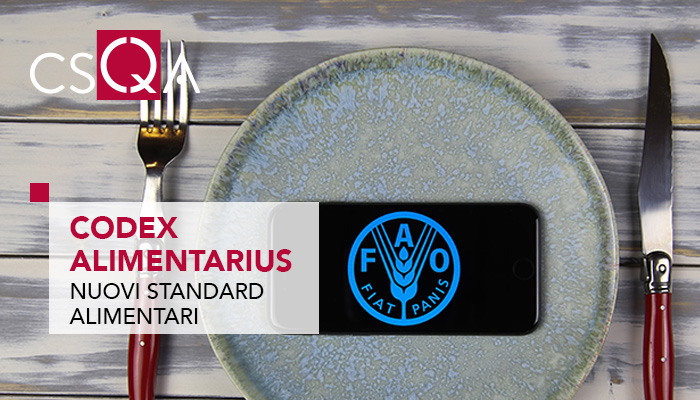
The 45th plenary discussion session of the Commission for the adoption of new food standards was held virtually from 21 to 25 November 2022. The Codex Alimentarius Commission is a joint initiative of the Food and Agriculture Organization of the United Nations (FAO) and the World Health Organization (WHO) and is charged with protecting consumer health and ensuring fair practices in the food trade.
The decisions made during the session are listed below:
- Revision of the standards for denominated vegetable oils - Sunflower oil : following recent studies, new limits have been introduced for oleic and linoleic acid;
- Development of guidelines for ready-to-use therapeutic foods (RUTF): these are therapeutic foods intended for children with severe acute malnutrition. UNICEF has promoted this standard;
- Development of guidelines for the management of foodborne disease outbreaks MTA (biological agents): these are guidelines addressed to the competent authorities responsible for the management of foodborne outbreaks and to food business operators (FBOs). They have been designed to facilitate the management and efficient communication of TMH outbreaks, in order to minimize their impacts and reduce risks. In fact, MTAs, in addition to the importance in the clinical and public health fields, for OSAs can have an impact on reputation and income and lead to legal disputes, just as at a national level they can have an impact on trade and livelihoods;
- Review of the General Principles of Food Hygiene ;
- Setting maximum levels for aflatoxins in certain cereals and cereal-based products, including foods for infants and young children: Aflatoxins are considered the most important group of mycotoxins, therefore it was decided to set maximum levels for rice, wheat and sorghum. These cereals, in fact, in some areas of the world are widely consumed as a staple food, contributing significantly to the exposure of these populations to aflatoxins;
- Development of guidelines for pesticides of little toxicological interest which can be exempted from the setting of Codex MRLs: new guidelines have been defined which offer criteria for identifying pesticides with little or no toxicological significance, for which there is an exemption from the definition of maximum residual limits;
- Development of standards for chili peppers and paprika : in view of the large quantities of chili peppers and paprika that are marketed annually all over the world, it was deemed necessary to define globally agreed quality standards;
- Definition of guidelines aimed at developing harmonized legislation on food safety for the African region following the birth of the African Continental Free Trade Area (AfCFTA), the largest free trade area in the world. (Source: https://www.ceirsa.org/ )
To know more:
Codex Alimentarius
WHO extension